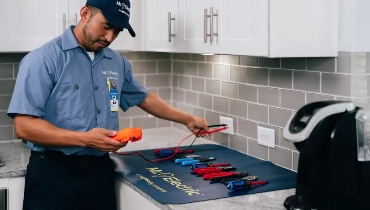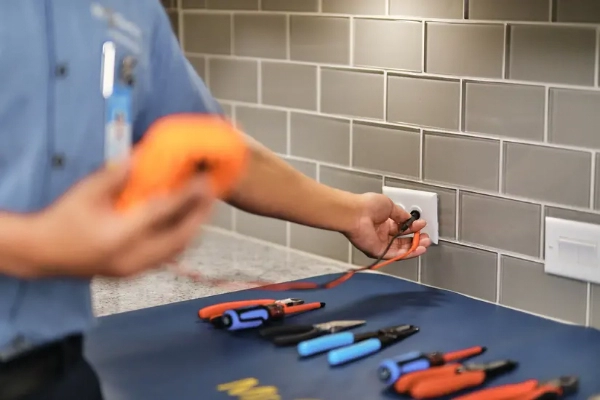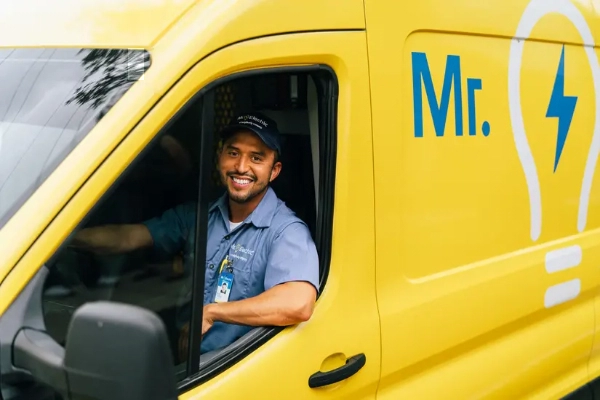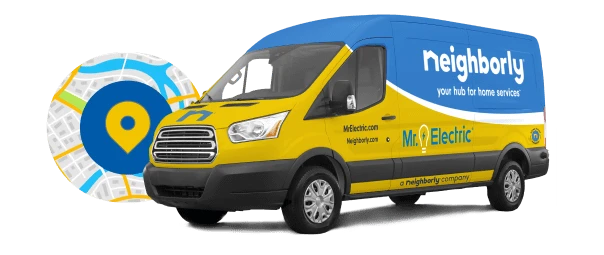
The standard voltage for your home’s lighting is 120v, but lower voltage lighting can save you money and works well for accent lighting or other non-primary lighting options. This diminished need for energy can also reduce your overall energy costs.
What Is Line Voltage Lighting?
Line voltage is the standard voltage of your home’s circuits, usually 120v. Typically, wall outlets in your home that you would use to plug in your toaster, charge your phone, and run your TV are all 120v. Standard lighting uses 120v circuits. Although 120v is typical, you’ll sometimes see “line voltage,” referred to as 277v. Line voltage as a term just refers to the standard voltage throughout your home, and some homes are wired to have a higher voltage. There isn’t a set “line voltage,” as different homes will have different electrical systems.
What Is Low-Voltage Lighting?
Although line voltage is the standard, low-voltage lighting is common for some applications. Low-voltage lighting usually relies on voltage in ranges as low as 12 to 24v. To get your standard voltage down to these levels, you’ll need a special transformer installed to control the flow. Low voltage electrical systems don’t require special fixtures because the transformer will adjust the level appropriately. However, you can also get low voltage lights with built-in transformers that can be connected to a line voltage circuit. Mr. Electric can upgrade your electrical panel and make sure your low-voltage transformer is properly installed.
Advantages and Disadvantages of Low-Voltage Lighting
Many homeowners see that low-voltage lights draw less electricity and cost less on the shelf. Other factors that will make one better than the other include desired function of the lights, location of the fixture, load requirements, and whether you plan to move the fixture at some point.
Some of the advantages of low-voltage lights include:
-
Energy savings. This is the one that attracts most people. Since low-voltage lights require less electricity, you will spend less money to keep them on.
-
Movability. Low-voltage lights are easier to move than line voltage systems. Because of this fact, low-voltage outdoor lighting is very common. Electrical codes don’t require lower voltage wires to be run through conduits (metal or plastic tubing that protects wires) and be buried the same way as line voltage lines, meaning that moving low-voltage wiring is easier.
-
Safety. Lower voltage decreases your chance of being electrocuted. As a result, lower voltage lighting can be great for gardens, as accidentally severing the line won’t have the negative consequences that line voltage could.

Related Topic: How to Install Low-Voltage Outdoor Lighting
Especially for outdoor lighting, low-voltage lights have many advantages, but they aren’t perfect. A few drawbacks to low-voltage lights are:
-
Complexity for inspection and maintenance. Because low-voltage systems are less common, finding qualified help with installation, inspection, and maintenance could be difficult, especially when dealing with the transformer that allows low-voltage systems to work.
-
Limited load capacities. Because your low-voltage system is connected to a transformer, there will be a diminished capacity compared to a line voltage system. Although this might not be an issue if you plan appropriately, adding to your electrical system with more lighting could cause a problem.
-
Voltage drop. Low-voltage systems filter through a transformer, and this could lead to a less reliable connection than a line system. Much like the limited load capacity problem, a voltage drop occurs when too much strain is put on your circuit. A commonly used metaphor for this is to compare your circuits to a hose; with low water pressure, the end of the hose will see less water with fewer volts going through.
Why Are My Low-Voltage Outdoor Lights Blinking?
Voltage drop and limited load capacity can both cause flickering lights. If there’s an issue with the transformer, not enough electricity will reach the lights, causing them to flicker. Luckily, LEDs shouldn’t be damaged by this low power flow, but you won’t get the full benefit of lighting that you want. Voltage drop occurs when there are too many devices on your circuit, and the draw is too great. It’s important not to overload your circuit, or you’ll experience flickering.

Find Electricians Who Understand Low-Voltage Circuits
If you’re looking to have low-voltage lighting installed in your home, indoor or outdoor, don’t try it alone. The installation of the transformer can be dangerous for an untrained person. The licensed electricians at your local Mr. Electric can recommend the best locations for low-voltage electrical systems in your home and install them safely, allowing you to reap the benefits without worry. Schedule an appointment or call to learn how we can help you with your low-voltage electrical work.

